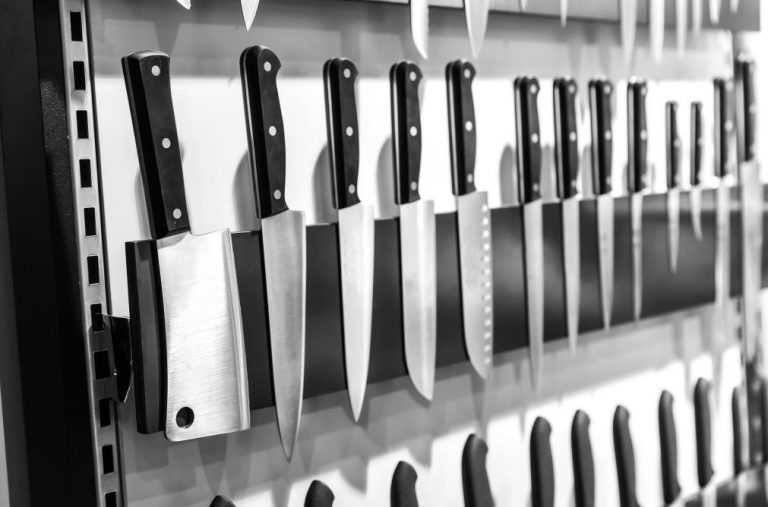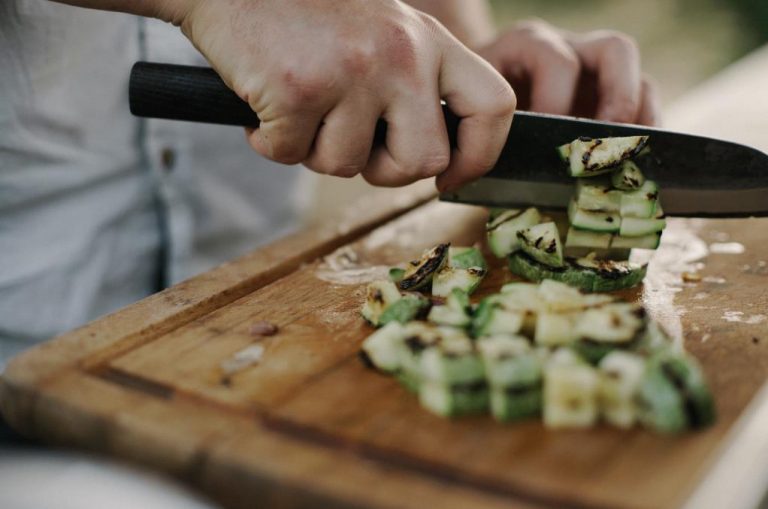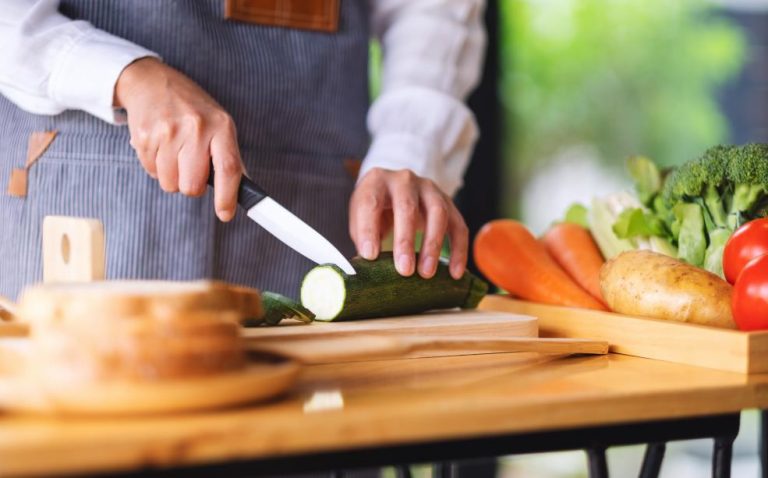Japanese cutlery has many distinct features that separate it from the others. They feature a lightweight, thin, and razor-sharp blade that cuts through ingredients delicately.
There is a lot to discuss about the blades, but it isn’t the only thing that makes them stand out. These incredible blades are equipped with a different type of handle than those found in western cutlery. The unique handle design, known as the wa-handle, complements the lightweight and elegant nature of Japanese kitchen knives.
This article is here to help you expand your knowledge of this unique handle style. Read to the end to find out what’s so special about the Japanese wa-handle.
What is the Japanese wa-handle?
The wa-handle is a prominent handle design for Japanese kitchen knives. These knife handles mainly features a hexagonal, oval, D, or shield-shaped design.
Compared to other knife handles, the wa-handle has a compact build. The design also affects the tang. It’s much smaller compared to full tang knives and lighter than even semi-tang blades of western cutlery. These make Japanese kitchen knives balance towards the tip. The forward balance aids cooks when chopping and mincing as it requires less push to cut.
The various wa-handle designs have different ergonomics, gripping experience, and strengths, which we’ll get to in a moment. Before that, let’s cover the general characteristics of the Japanese wa-handle.
Buy Wholesale Knives and Start Scaling up with Us Today
Contact us and connect with a sales rep to get a free quote.
Features of wa-handle
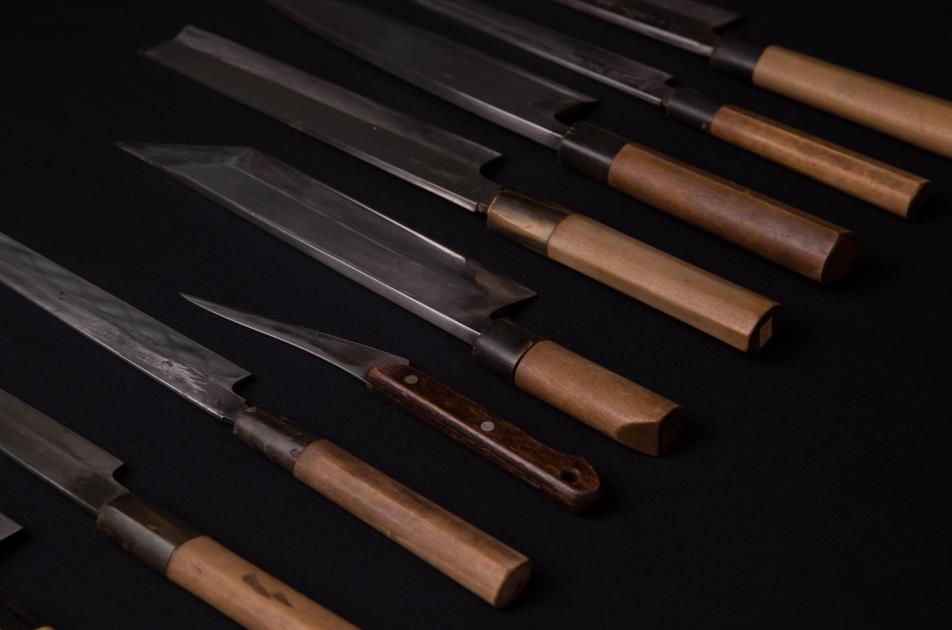
The go-to material for making a wa-handle to fit a Japanese blade is wood, but the handle can use more than just wood. The wa-handle traditionally features a collar right where the blade meets the handle. This collar is traditionally made from buffalo horn. It functions similarly to the semi-bolsters in western kitchen knives. The collar increases the knife’s strength, protecting the handle from cracking.
The collar is still visible in today’s Japanese kitchen knives, though the functional use of it isn’t that necessary. Modern woodworking tools allow Japanese knifemakers to carve handles precisely without damaging them to insert the tang.
Besides wood, animal tusks, bones, and horns are also used for making traditional wa-handles. However, these natural materials for wa-handles aren’t as popular anymore. The overwhelming majority of wa-handles nowadays are made from wood – Japanese walnut and chestnut, and rosewood, to be more specific.
In recent years, carbon fiber and titanium gained traction for high-end Japanese kitchen knives. There are also a handful of wa-handles made from micarta and plastic. As you can expect, these are more for knives that are on the lower end of the spectrum.
Types of wa-handle
The general characteristics of the Japanese wa-handle are similar regardless of the design. What changes with wa-handle designs is the grip experience and the ergonomics it brings. Even though these can be seen as tiny details, they can make all the difference to your customers.
Octagonal
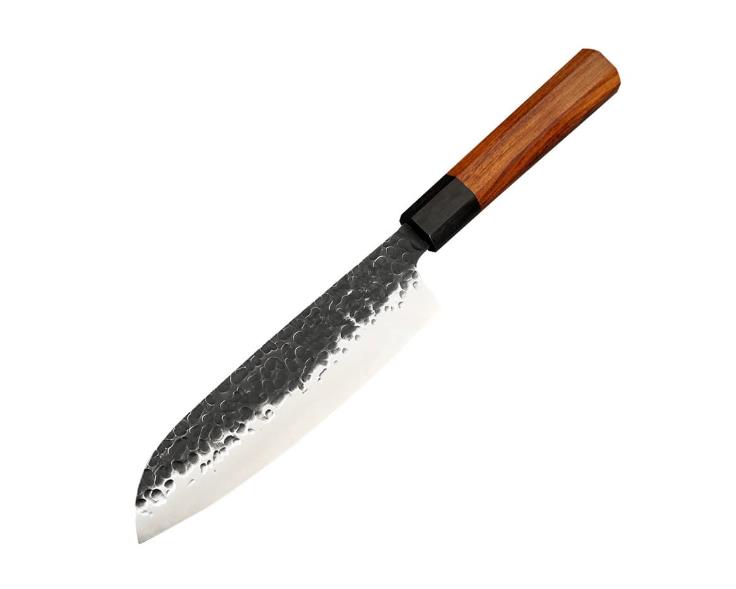
Octagonal (wa) wa-handle is considered one of the most popular designs. Most Japanese kitchen knives in the market come with an octagonal wa-handle.
This handle design provides cooks with a firm grip. It’s perfect for slicing tasks, where cooks need good control over the blade.
The octagonal shape of these handles isn’t perfectly symmetrical. The handle stands high when the cook holds the knife perpendicular to the cutting board. So, the edges on the side of the handle are taller than the top or bottom. This naturally aligns the blade vertically to the cutting board.
This tweak accommodates the Japanese way of holding a knife. The index finger extends to the spine, while the thumb and rest of the fingers wrap the handle. Otherwise, the handle would feel too chunky if it was a perfect octagon, making the knife uncomfortable to operate. This attribute is the same in all other wa-handle types.
Oval
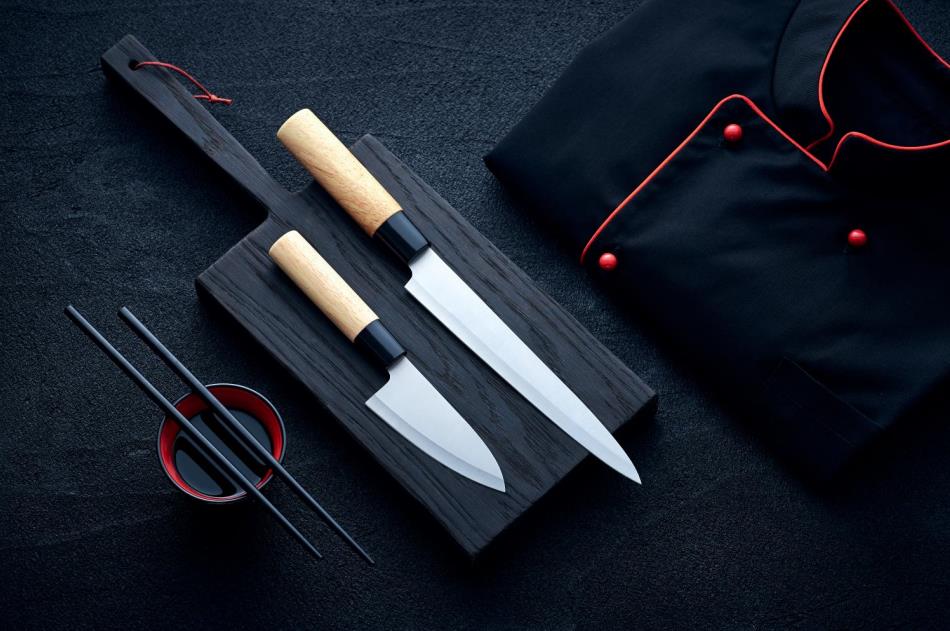
The oval wa-handle is another widespread type. It offers great control with a comfy grip. The design conforms to the natural movements of the fingers when gripping the handle.
The oval wa-handle is arguably the most comfortable of all. It’s the ideal wa-handle type for all-purpose Japanese kitchen knives that get the most use, like Gyuto and Santoku. The handle doesn’t discomfort the user, even when used for extended periods.
Same as the other – and all – wa-handles, the oval shape orients the knife in a vertical grip, facing the cutting edge perpendicular to the cutting board. It’s a simple yet very helpful handle design for cooks of all levels.
Because it’s more comfortable to operate an oval wa-handle, advise your customers buying a Japanese knife for the first time to get one fitted with it. The oval wa-handle is the type of Japanese knife handle they – without a doubt – won’t regret buying.
D-shape
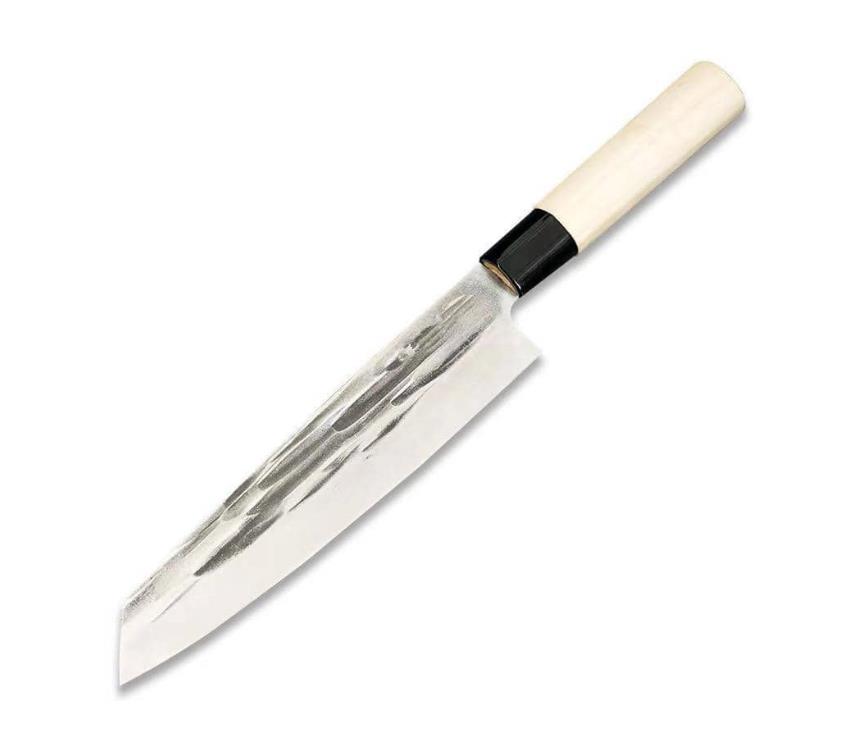
In Japan, the D-shaped wa-handles are known as shinogi. This type of wa-handle is almost identical to oval ones. The difference is the handle sticks out – sort of in a bumpy way – giving it a D-shaped look.
Since this design element can occur only on one side of the handle, it isn’t ambidextrous. There are right-handed and left-handed D-shape wa-handles. The bump arises on the right for left-handed cooks and vice versa.
The benefit of the D-shaped wa-handle is that the handle doesn’t wobble inside the hand when moving the knife. It remains in the exact place between the index and middle finger when pinch-gripping. The handle’s fixed position enables the cook to operate the blade precisely.
If your customers aren’t in favor of wa-handles due to having big hands, this wa-handle type is likely to suit them. The design mitigates overlapping fingers, making the D-shape wa-handle particularly fitting for cooks with big hands.
Although the D-shape wa-handle’s firm grip is helpful for accurate cuts, it can get tedious after prolonged periods. It isn’t the most comfortable wa-handle, but the precise cuts with extreme control are a fair trade to many cooks.
Shield
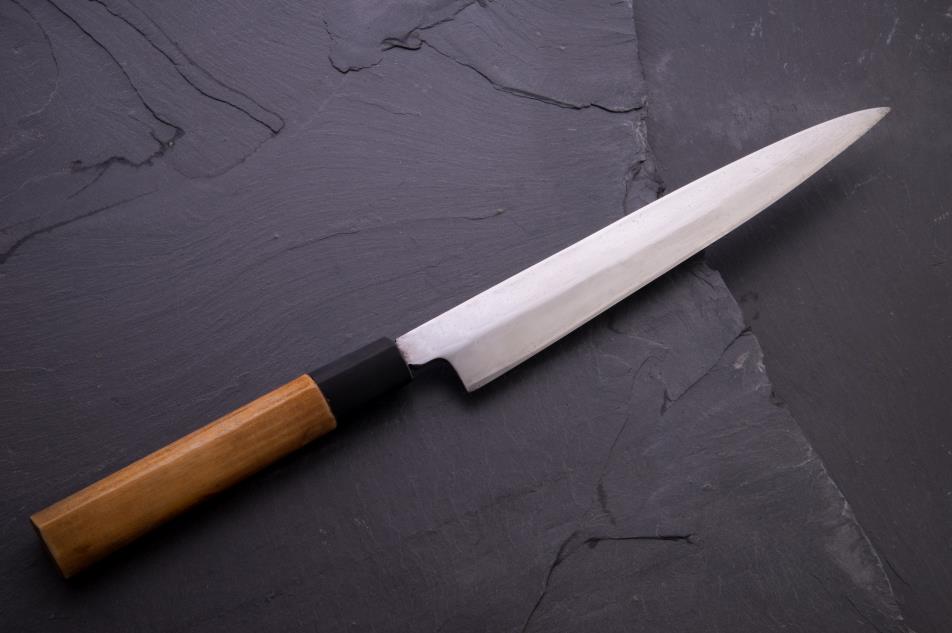
You can consider the shield design as something between octagonal and oval wa-handles. Hinoura is the Japanese word for this type of wa-handle.
The shield wa-handle has eight sides, the same as an octagon, but it tapers off. The topmost part of the handle is the widest, and the bottom is the narrowest. Some shield wa-handles also feature a rounded bottom section.
The shield wa-handle is perfect for cooks with petite hands. Let’s not get it twisted, though. While it may seem the opposite of the D-shape wa-handle in this matter, it’s also comfortable for cooks with big hands.
This wa-handle design offers a fixed grip that allows good control over the blade. Whether simple slicing duties or chopping fruits and vegetables.
Key features of wa-handle types
- Octagonal (wa): Very popular with a firm grip and great control.
- Oval: Features the most comfortable design with fair control and grip.
- D-shape (shinogi): The only non-ambidextrous wa-handle, D-shape has the firmest grip with excellent control.
- Shield (hinoura): Perfect for cooks with small hands, the shield wa-handle has a comfortable grip with good control.
Wa-handle vs. western handle
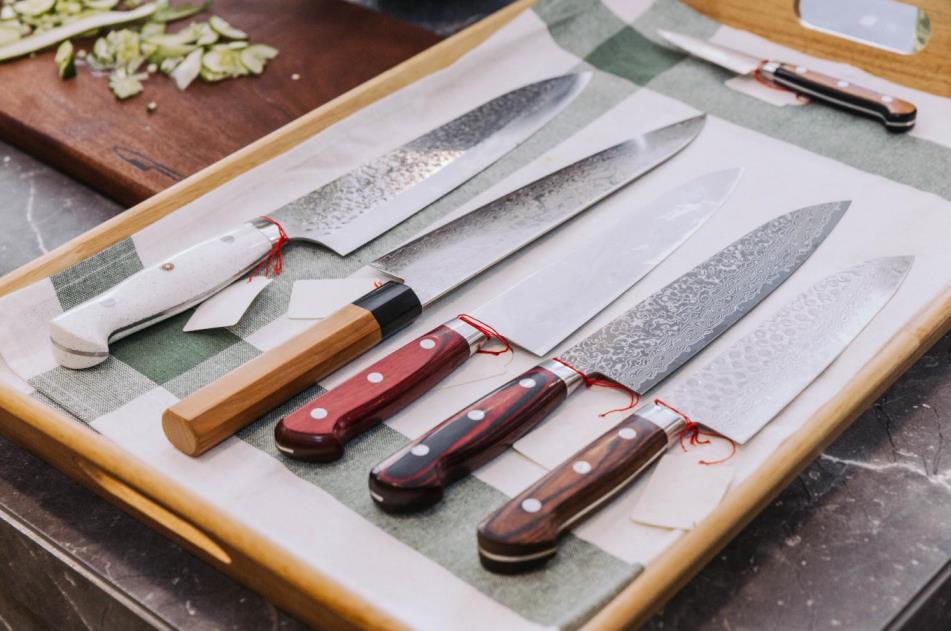
The difference between the western handle (yo-handle) and the wa-handle is the design, how they attach to the blade, and grip style.
The western handle is sturdy and bulky, whereas the Japanese handle is slim and elegant. The design gives the western handle a solid grip, perfect for heavy-duty cutting tasks. The wa-handle, on the other hand, isn’t the best for these duties. It’s better for precise cuts that require control, like slicing fish for sashimi.
Another difference is how knifemakers fit these handles into blades. The Japanese knives have a partial tang secured into the handle with adhesives. The yo-handle usually displays the tang over it and is secured with rivets.
Considering the typical meals prepared, neither one is better than the other. They have their own uses that aid cooks in specific cutting needs. That said, choosing one over the other depends on the user’s preference and the knife’s purpose.
Buy Wholesale Knives and Start Scaling up with Us Today
Contact us and connect with a sales rep to get a free quote.
Should you sell wa-handle knives?
The wa-handle is the standard for Japanese kitchen knives. If you plan to sell any Japanese kitchen knife, it’s impossible to avoid them.
Cooks that appreciate the characteristics of a Japanese kitchen knife are likely to find the wa-handle appropriate to their cutting style. As mentioned, the slim build of these knife handles matches the lightweight and thin Japanese blades perfectly. The wa-handle is a must for all Japanese knife enthusiasts. We highly recommend selling Japanese kitchen knives with wa-handles.
The popularity of Japanese kitchen knives is ever-growing in North America and Europe. Since the wa-handle is unfamiliar to many cooks – to the point it’s almost alien – we advise shops to also have at least a small selection of yo-handles.
In addition to selling knives with a wa-handle, consider selling these as a separate component. The wa-handles tend to be more delicate due to their build and wood. Therefore, they demand some upkeep from the user.
Overlooking maintenance can result in damaging the handle. Undoubtedly, some of your customers will be in this group and look for a handle to replace their old ones.
Selling Japanese knives with both handle types will expand your appeal, enabling you to reach more customers.
Bulk purchase wa-handles from LeeKnives
The wa-handles we use are made from a wide range of materials to meet the expectations of various users and match their budgets. Our knife samples with wa-handles cover all Japanese kitchen knives – Gyuto, Deba, Kiritsuke, Yanagiba, Petty, Nakiri – you name it.
Get a quote from us today for knives with wa-handles and components.

